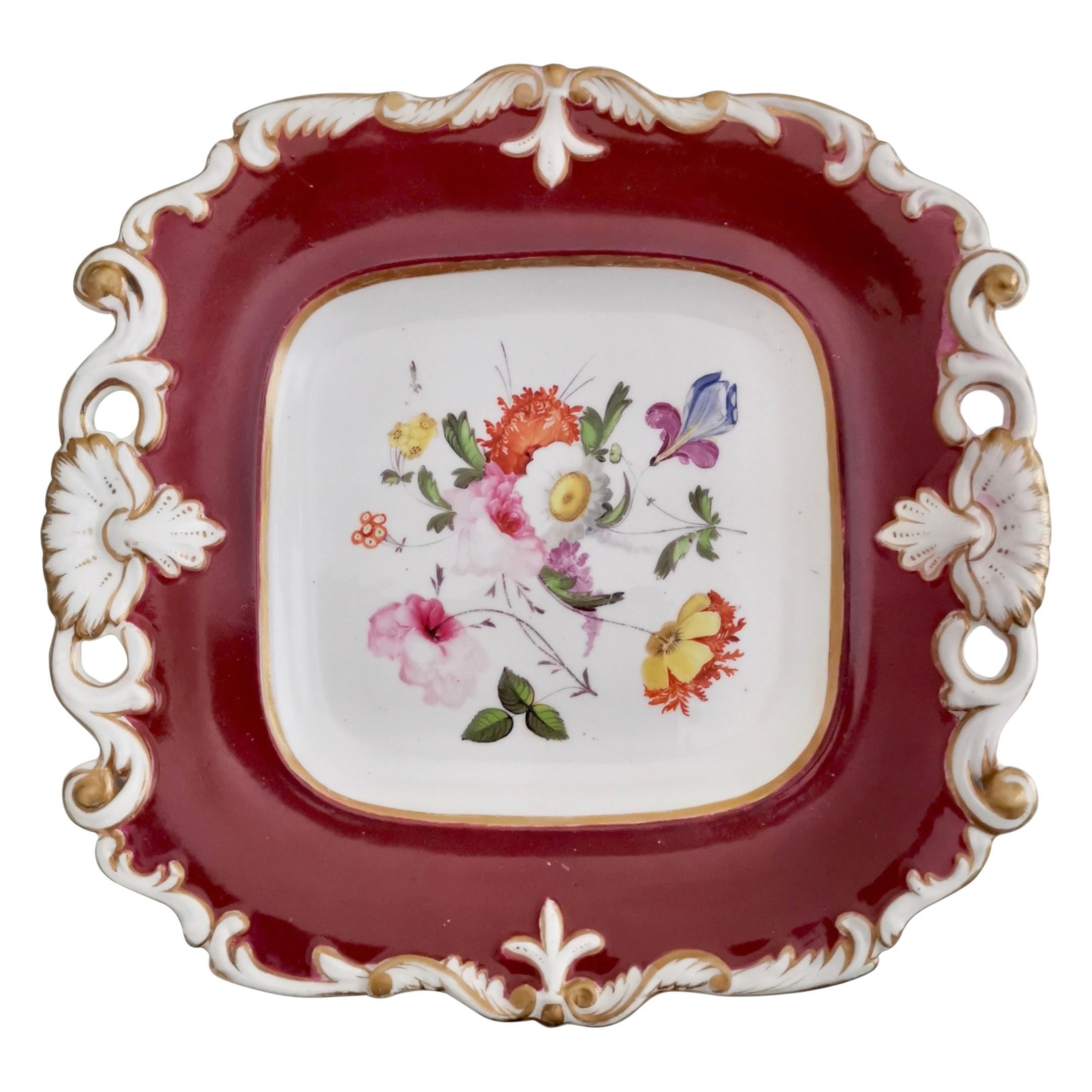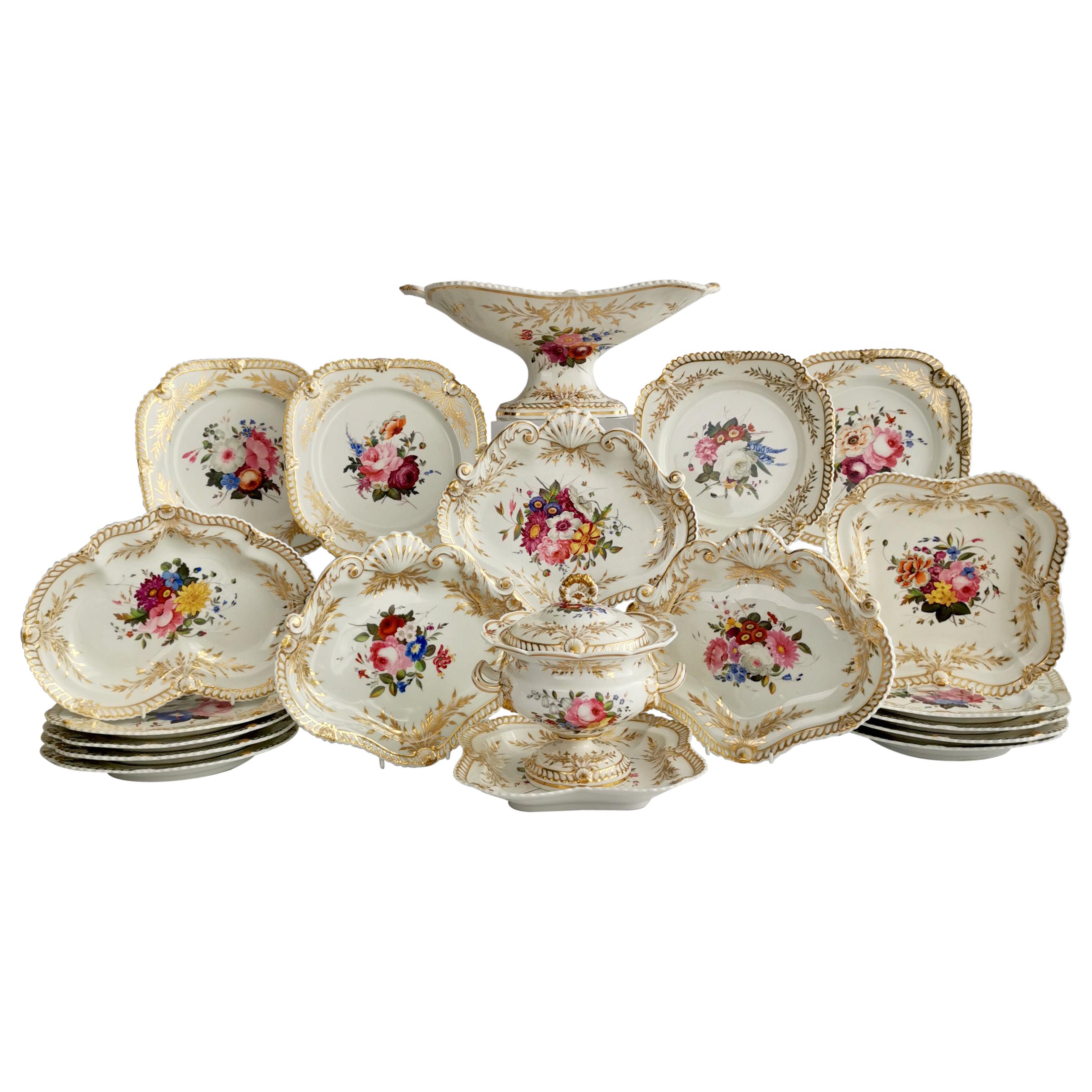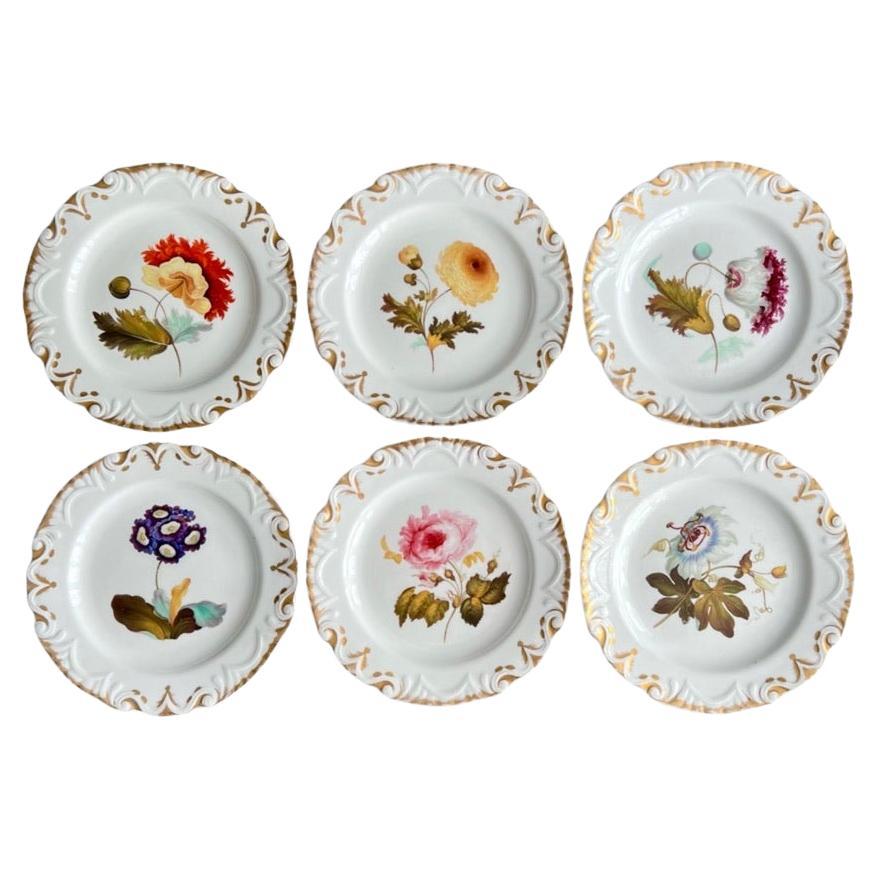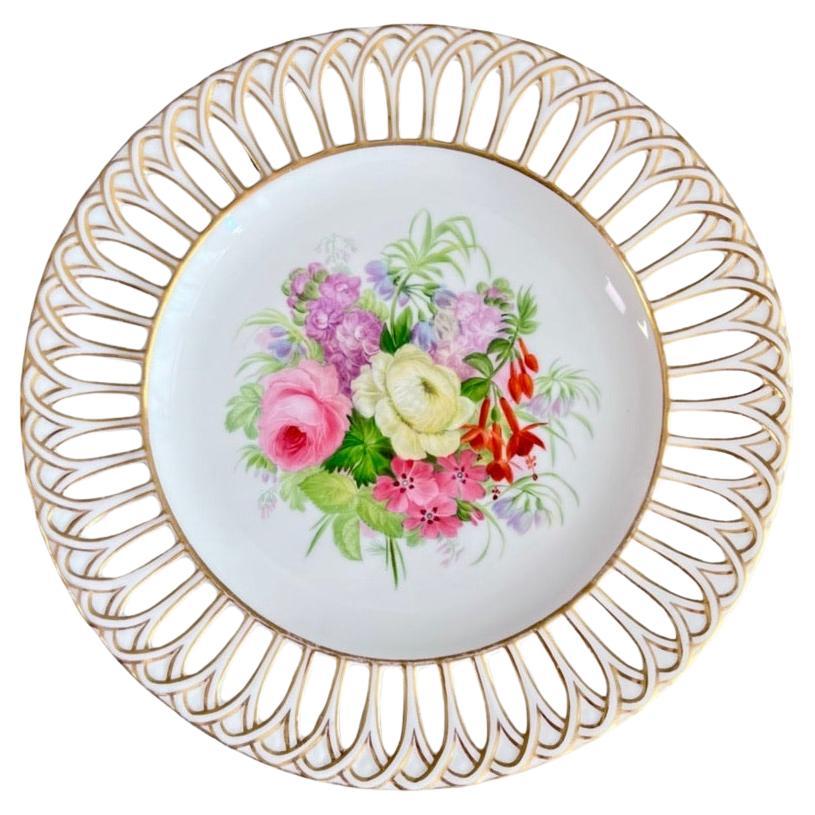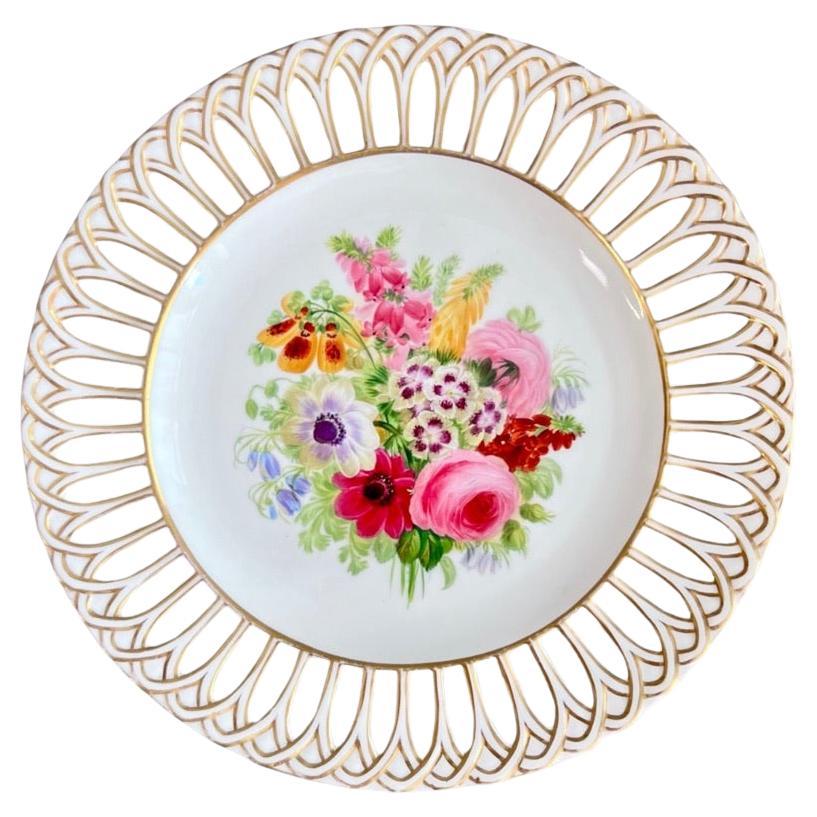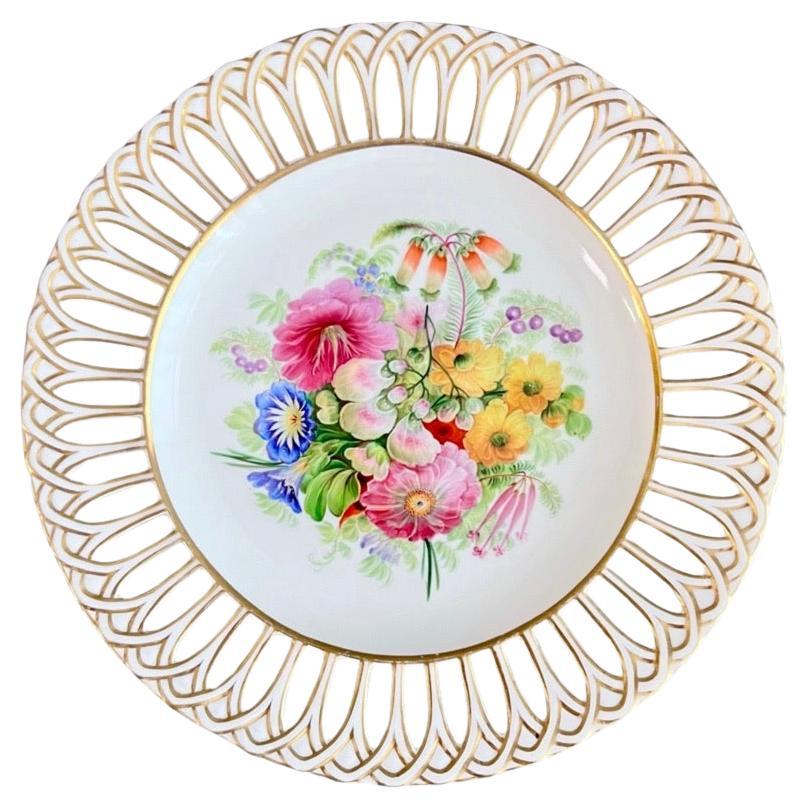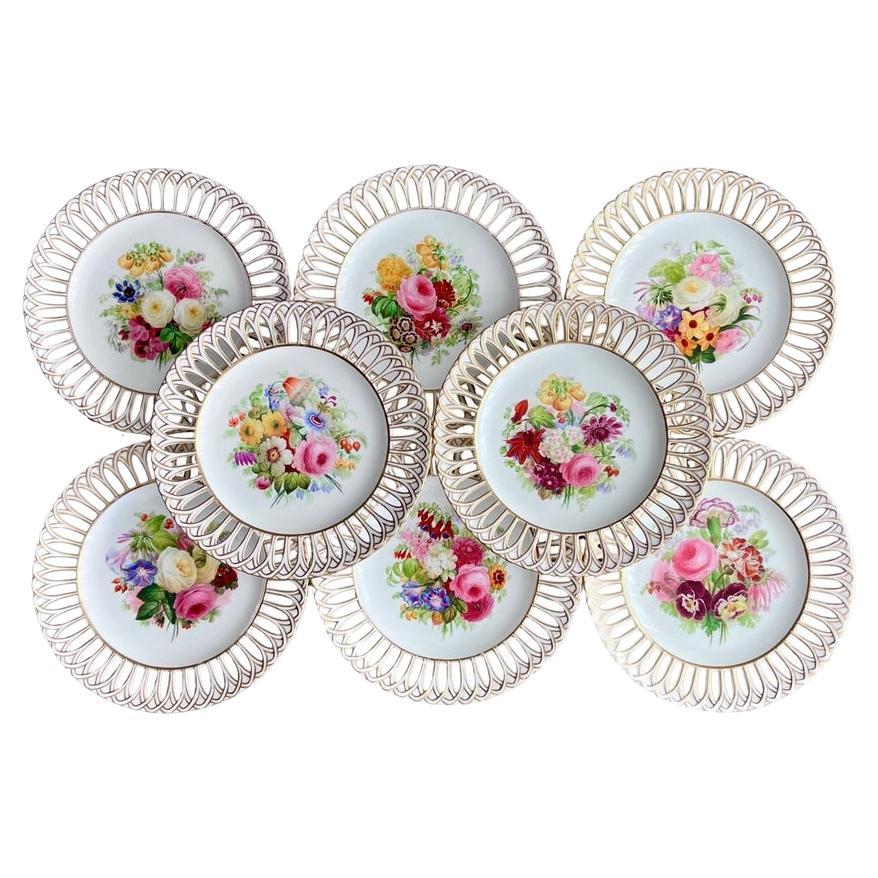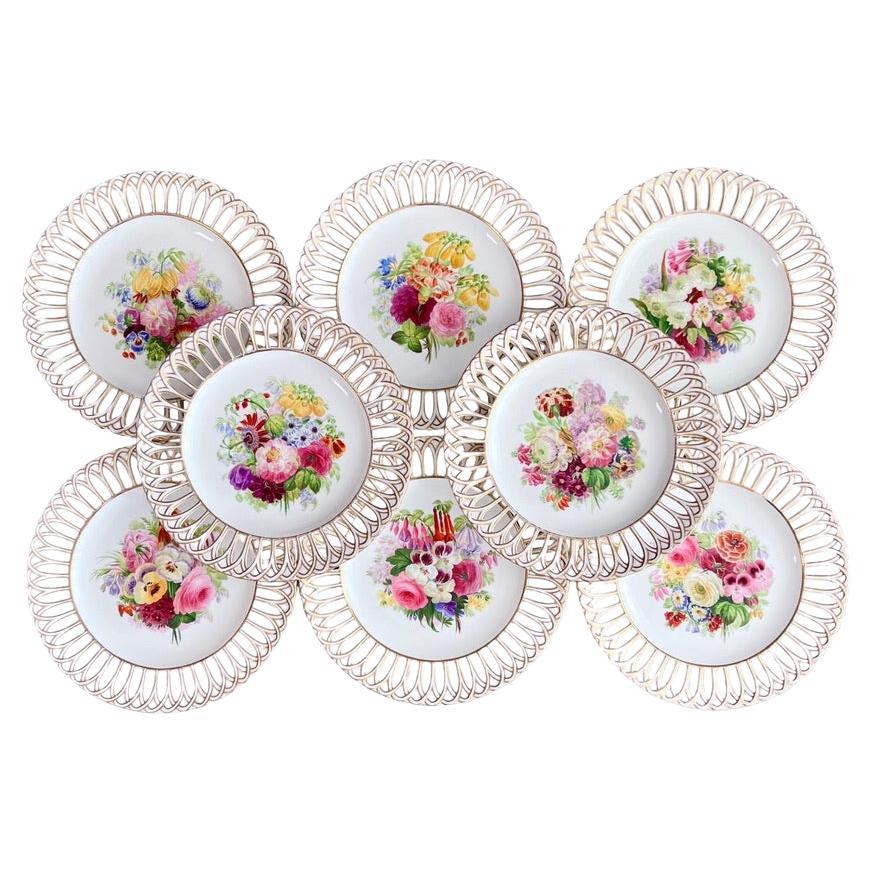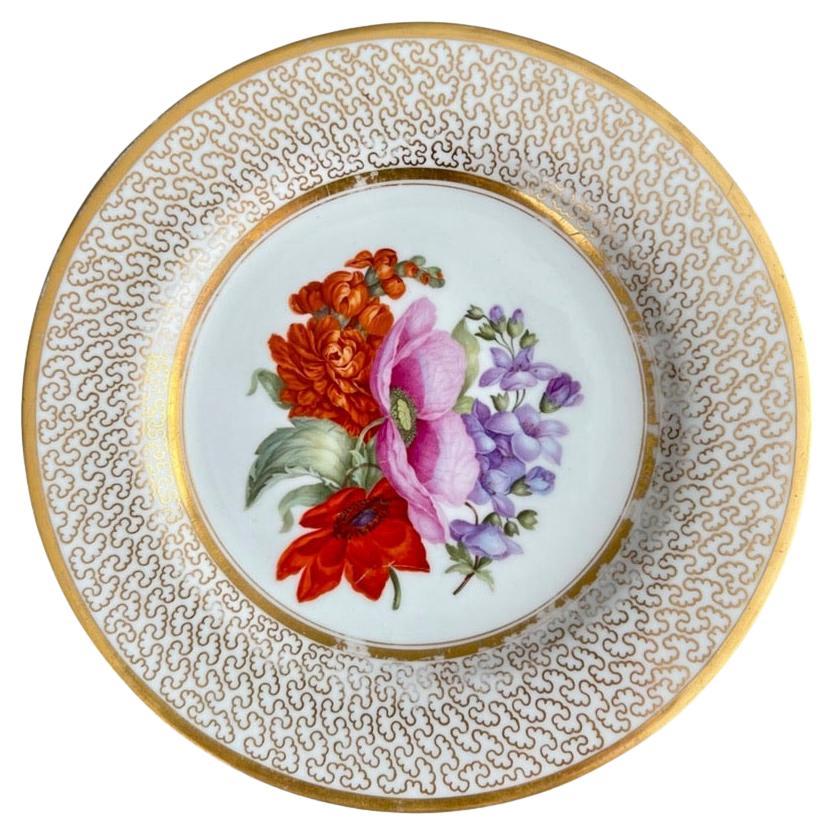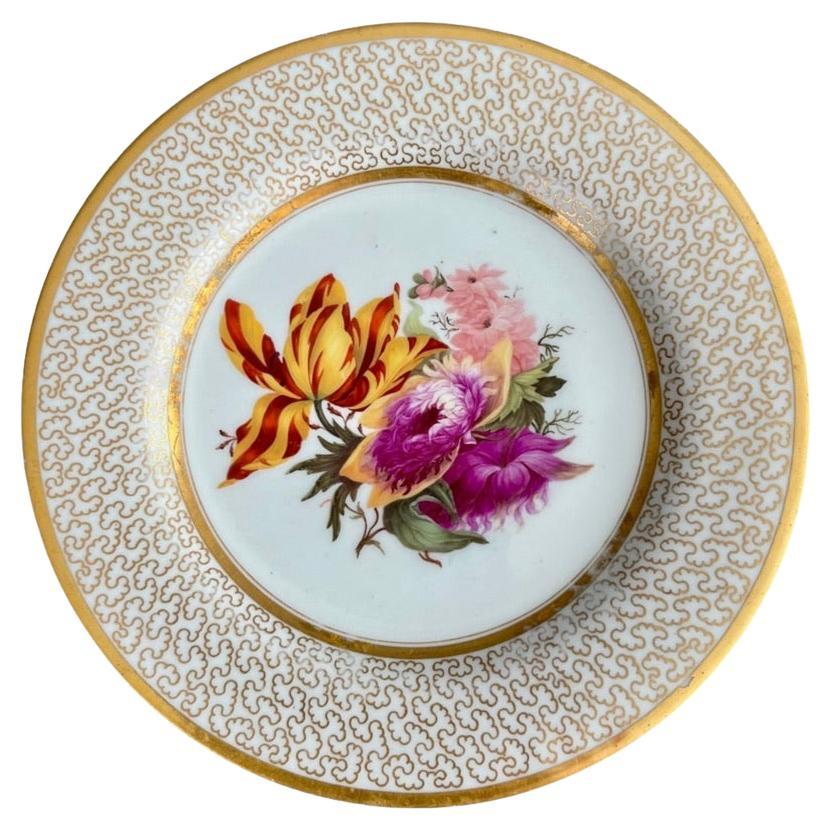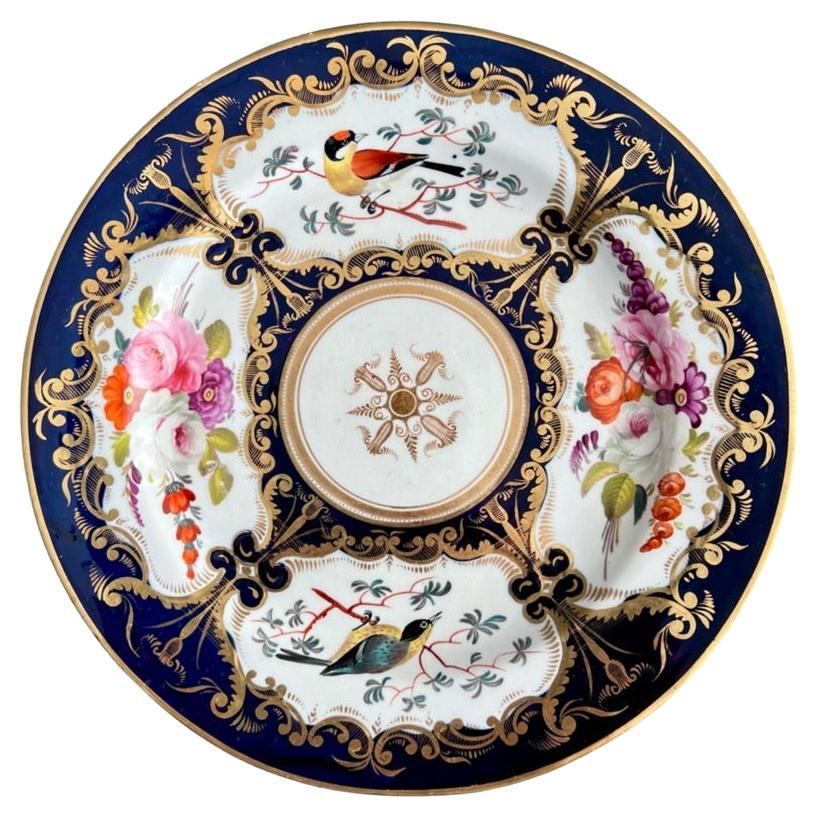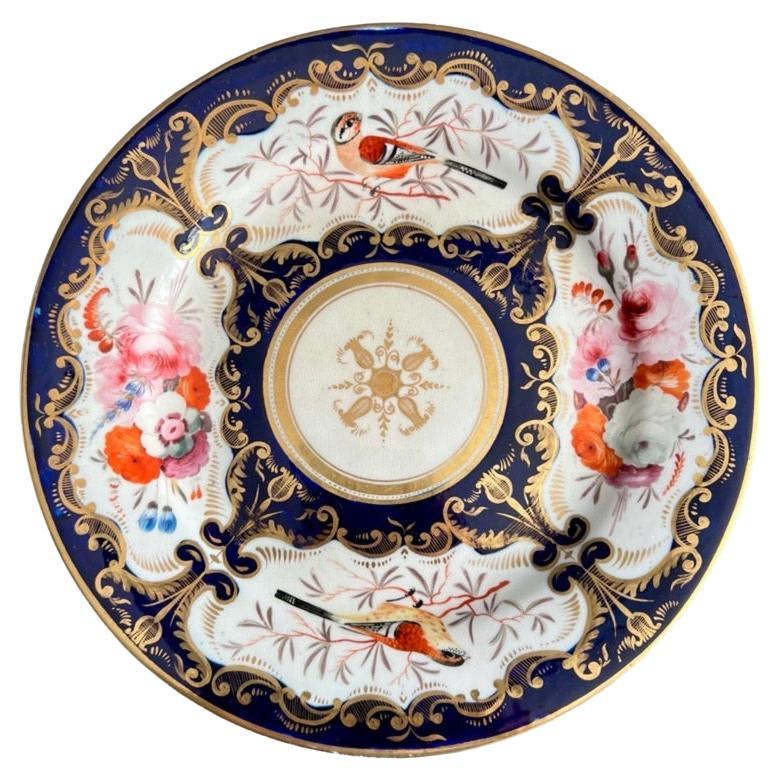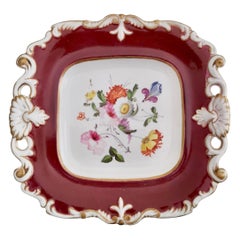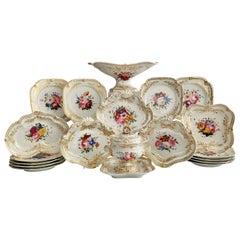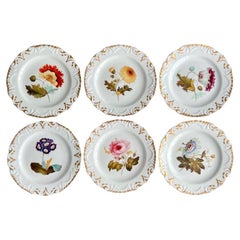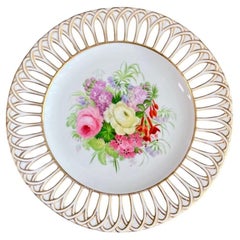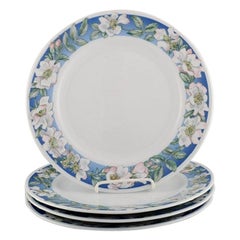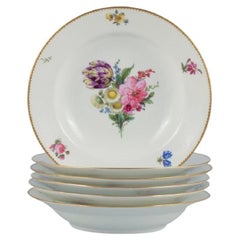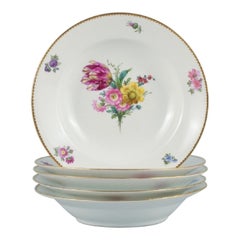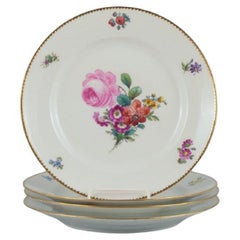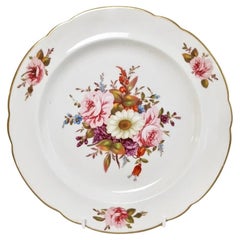
Charles Bourne Plate, White with Sublime Flowers, Regency, ca 1820
View Similar Items
Want more images or videos?
Request additional images or videos from the seller
1 of 16
Charles Bourne Plate, White with Sublime Flowers, Regency, ca 1820
About the Item
- Creator:Charles Bourne (Maker)
- Dimensions:Height: 0.75 in (1.91 cm)Diameter: 8.75 in (22.23 cm)
- Style:Regency (Of the Period)
- Materials and Techniques:
- Place of Origin:
- Period:
- Date of Manufacture:circa 1820
- Condition:Wear consistent with age and use. In perfect antique condition without any damage, repairs, crazing or significant wear.
- Seller Location:London, GB
- Reference Number:Seller: A-BOU011stDibs: LU4805126792372
About the Seller
5.0
Gold Seller
Premium sellers maintaining a 4.3+ rating and 24-hour response times
Established in 2016
1stDibs seller since 2019
225 sales on 1stDibs
Typical response time: 2 hours
Authenticity Guarantee
In the unlikely event there’s an issue with an item’s authenticity, contact us within 1 year for a full refund. DetailsMoney-Back Guarantee
If your item is not as described, is damaged in transit, or does not arrive, contact us within 7 days for a full refund. Details24-Hour Cancellation
You have a 24-hour grace period in which to reconsider your purchase, with no questions asked.Vetted Professional Sellers
Our world-class sellers must adhere to strict standards for service and quality, maintaining the integrity of our listings.Price-Match Guarantee
If you find that a seller listed the same item for a lower price elsewhere, we’ll match it.Trusted Global Delivery
Our best-in-class carrier network provides specialized shipping options worldwide, including custom delivery.More From This Seller
View AllSamuel Alcock Porcelain Plate, Maroon with Flowers, Regency, ca 1825
By Samuel Alcock & Co.
Located in London, GB
This is a very striking and rare dessert plate made by Samuel Alcock around the year 1825. The plate is square and has the "inverted shell" moulding with pierced borders, a deep maro...
Category
Antique 1820s English Regency Dinner Plates
Materials
Porcelain
Chamberlains Worcester Dessert Service, White with Flowers, Regency, ca 1822
By Chamberlains Worcester
Located in London, GB
This is a spectacular and rare dessert service made by Chamberlains Worcester in about 1822. The service consists of a high comport, 2 square dishes, 1 kidney shaped dish, 3 shell di...
Category
Antique 1820s English Regency Dinner Plates
Materials
Porcelain
Machin Set of 6 Plates, Moustache Shape, White with Flowers, ca 1825
By Machin
Located in London, GB
This is a beautiful set of 6 dessert plates made by Machin around 1825, which is known as the Regency period. The items have the famous "moustache" moulding picked out in gilt, a sim...
Category
Antique 1820s English Regency Dinner Plates
Materials
Porcelain
Copeland Plate, Reticulated with Sublime Flowers by Greatbatch, 1848 (2)
By Copeland
Located in London, GB
This is a beautiful plate made by Copeland in 1848. It is decorated with a sublimely painted flower arrangement by the artist Greatbatch.
We have two sets of 8 of these plates available, as well as a few more separate ones; please see separate listings.
The Copeland factory was the third iteration of the famous Spode factory, after the "Copeland & Garrett" period which transitioned into the "Copeland" period in about 1833. The Spode/Copeland factory was one of the most prominent potteries right from the start of English porcelain production in the late 1700s to the demise of the industry in the 1960s and ultimate closure in the early 21st Century. In fact it was the founder Josiah Spode who was responsible for the recipe for bone china that made English china production so successful in the two centuries to come. Throughout all the changes, their items have always remained of exceptionally high quality and many of the designs have become iconic.
This plate was potted in fine white bone china, the rim meticulously reticulated in the "Gothic" shape. Reticulation was very time consuming and difficult, and just this detail would have made this plate expensive. The sublimely painted flower arrangement painted in the centre were done by Greatbatch, one of the well-known floral artists working for Copeland. Greatbatch was active between 1845 and 1860, and worked together with his brother R. Greatbatch, who was a talented gilder. They exhibited at the Great Exhibition of 1851.
This plate would have belonged to a sublimely expensive dessert service. It is stamped with the small blue Copeland mark with interlocking C's, and painted in red with the pattern number 7913, dating it at the year 1848.
Documentation: A plate of this service is shown on page 80 of Steven Smith's "Spode & Copeland: Over Two Hundred Years of Fine China and...
Category
Antique 1840s English Victorian Dinner Plates
Materials
Porcelain
Copeland Plate, Reticulated, Sublime Flowers by Greatbatch, 1848 (3)
By Copeland
Located in London, GB
This is a beautiful plate made by Copeland in 1848. It is decorated with a sublimely painted flower arrangement by the artist Greatbatch.
We have two sets of 8 of these plates available, as well as a few more separate ones; please see separate listings.
The Copeland factory was the third iteration of the famous Spode factory, after the "Copeland & Garrett" period which transitioned into the "Copeland" period in about 1833. The Spode/Copeland factory was one of the most prominent potteries right from the start of English porcelain production in the late 1700s to the demise of the industry in the 1960s and ultimate closure in the early 21st Century. In fact it was the founder Josiah Spode who was responsible for the recipe for bone china that made English china production so successful in the two centuries to come. Throughout all the changes, their items have always remained of exceptionally high quality and many of the designs have become iconic.
This plate was potted in fine white bone china, the rim meticulously reticulated in the "Gothic" shape. Reticulation was very time consuming and difficult, and just this detail would have made this plate expensive. The sublimely painted flower arrangement painted in the centre were done by Greatbatch, one of the well-known floral artists working for Copeland. Greatbatch was active between 1845 and 1860, and worked together with his brother R. Greatbatch, who was a talented gilder. They exhibited at the Great Exhibition of 1851.
This plate would have belonged to a sublimely expensive dessert service. It is stamped with the small blue Copeland mark with interlocking C's, and painted in red with the pattern number 7913, dating it at the year 1848.
Documentation: A plate of this service is shown on page 80 of Steven Smith's "Spode & Copeland: Over Two Hundred Years of Fine China and...
Category
Antique 1840s English Victorian Dinner Plates
Materials
Porcelain
Copeland dessert Plate, Reticulated, Sublime Flowers by Greatbatch, 1848 (1)
By Copeland
Located in London, GB
This is a beautiful plate made by Copeland in 1848. It is decorated with a sublimely painted flower arrangement by the artist Greatbatch.
We have two sets of 8 of these plates available, as well as a few more separate ones; please see separate listings.
The Copeland factory was the third iteration of the famous Spode factory, after the "Copeland & Garrett" period which transitioned into the "Copeland" period in about 1833. The Spode/Copeland factory was one of the most prominent potteries right from the start of English porcelain production in the late 1700s to the demise of the industry in the 1960s and ultimate closure in the early 21st Century. In fact it was the founder Josiah Spode who was responsible for the recipe for bone china that made English china production so successful in the two centuries to come. Throughout all the changes, their items have always remained of exceptionally high quality and many of the designs have become iconic.
This plate was potted in fine white bone china, the rim meticulously reticulated in the "Gothic" shape. Reticulation was very time consuming and difficult, and just this detail would have made this plate expensive. The sublimely painted flower arrangement painted in the centre were done by Greatbatch, one of the well-known floral artists working for Copeland. Greatbatch was active between 1845 and 1860, and worked together with his brother R. Greatbatch, who was a talented gilder. They exhibited at the Great Exhibition of 1851.
This plate would have belonged to a sublimely expensive dessert service. It is stamped with the small blue Copeland mark with interlocking C's, and painted in red with the pattern number 7913, dating it at the year 1848.
Documentation: A plate of this service is shown on page 80 of Steven Smith's "Spode & Copeland: Over Two Hundred Years of Fine China and...
Category
Antique 1840s English Victorian Dinner Plates
Materials
Porcelain
You May Also Like
Four Royal Copenhagen White Rose Dinner Plates with Blue Border, White Flowers
Located in Copenhagen, DK
Four Royal Copenhagen White Rose dinner plates with blue border, white flowers and foliage. Dated 1992-1999.
Measure: Diameter: 25.3 cm.
In excellent condition.
Stamped.
Category
1990s Danish Porcelain
Materials
Porcelain
$320 Sale Price / set
20% Off
B&G, Bing & Grondahl Saxon Flower. Six Deep Plates Decorated with Flowers
Located in Copenhagen, DK
B&G, Bing & Grondahl Saxon flower.
Six deep plates decorated with flowers and gold rim.
circa 1920s.
In perfect condition.
Marked.
First factory quality.
Dimensions: D 24.0 x H...
Category
Vintage 1920s Danish Porcelain
Materials
Porcelain
$480 Sale Price / set
20% Off
B&G, Bing & Grondahl Saxon Flower, Five Deep Plates Decorated with Flowers
Located in Copenhagen, DK
B&G, Bing & Grondahl Saxon flower.
Five deep plates decorated with flowers and gold rim.
Approximately 1920s.
In perfect condition.
Marked.
First factory quality.
Dimensions: d...
Category
Vintage 1920s Danish Porcelain
Materials
Porcelain
$400 Sale Price / set
20% Off
B&G, Bing & Grondahl Saxon Flower, Four Dinner Plates Decorated with Flowers
Located in Copenhagen, DK
B&G, Bing & Grondahl Saxon flower.
Four dinner plates decorated with flowers and gold rim.
Approx. 1920s.
In perfect condition.
Marked.
First factory quality.
Dimensions: D 24....
Category
Vintage 1920s Danish Porcelain
Materials
Porcelain
$384 Sale Price / set
20% Off
B&G, Bing & Grondahl Saxon Flower. Four Deep Plates Decorated with Flowers
Located in Copenhagen, DK
B&G, Bing & Grondahl Saxon flower.
Four deep plates decorated with flowers and gold rim.
circa 1920s.
In perfect condition.
Marked.
First factory quality.
Dimensions: D 24.0 x ...
Category
Vintage 1920s Danish Porcelain
Materials
Porcelain
$320 Sale Price / set
20% Off
B&G, Bing & Grondahl Saxon Flower, Three Deep Plates Decorated with Flowers
Located in Copenhagen, DK
B&G, Bing & Grondahl Saxon flower.
Three deep plates decorated with flowers and gold rim.
circa 1920s.
In perfect condition.
Marked.
First factory quality.
Dimensions: D 24.0 x...
Category
Vintage 1920s Danish Porcelain
Materials
Porcelain
$240 Sale Price / set
20% Off
Recently Viewed
View AllMore Ways To Browse
1800s Bone China
Marked Cb
Three Legged Fire Table
Tiber Press
Tibetan Apron
Tibetan Horse Blankets
Tibor Kalman
Tiffany And Co Blue Book Ball
Tiffany And Co Chafing
Tiffany And Co Moscow
Tiffany And Co Mug Set
Tiffany And Co Pumpkin
Tiffany Blue Kitchen Cabinets
Tiffany Broom Corn
Tiffany Cigar Lighter
Tiffany Co Sheep
Tiffany Crystal Pitcher
Tiffany English King Dinner Knife
